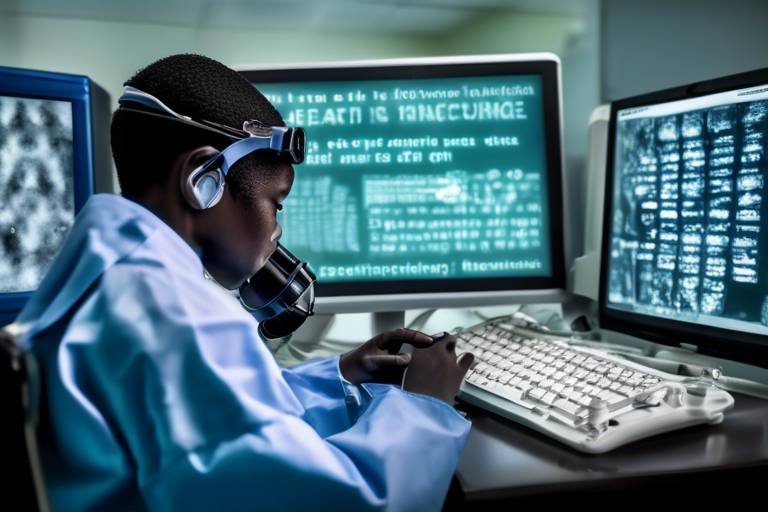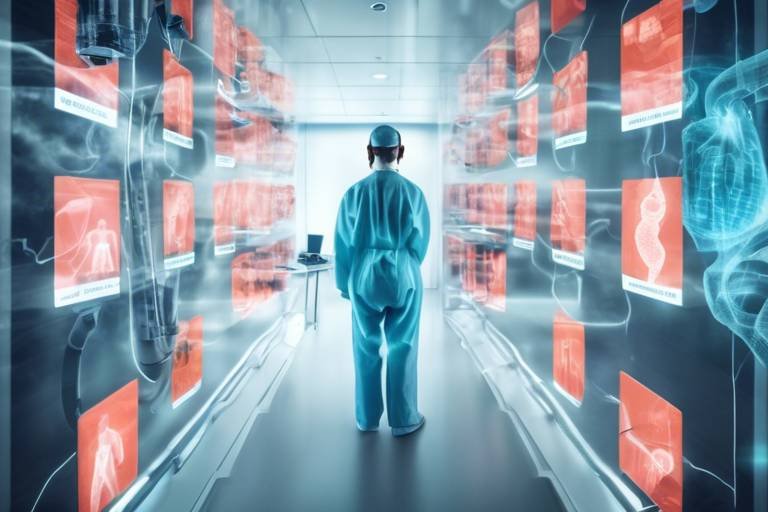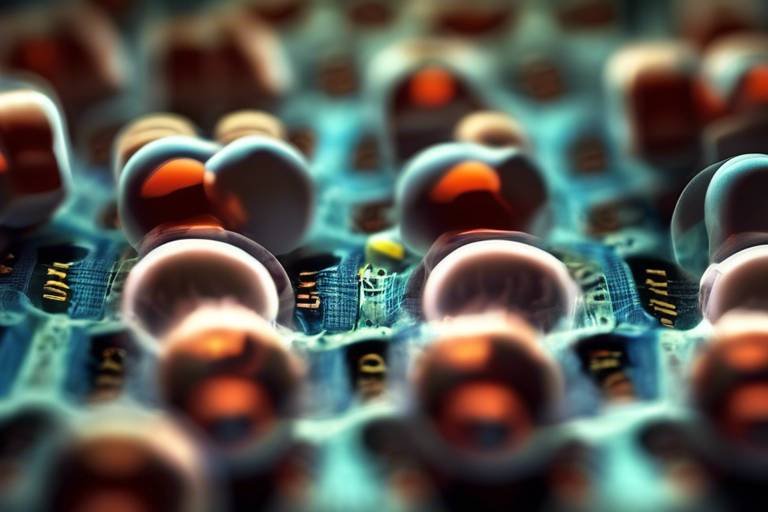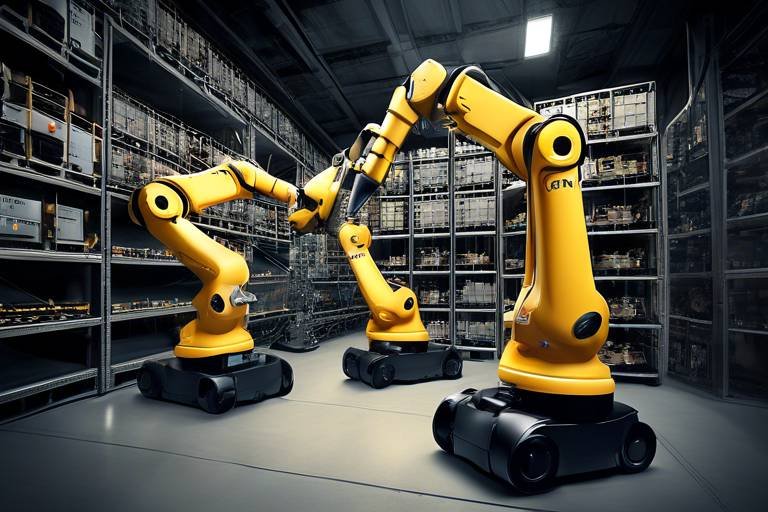How Technology is Reshaping Forensic Investigations
In today's fast-paced world, the intersection of technology and forensic investigations is nothing short of revolutionary. Imagine a crime scene where every detail is captured in stunning clarity, where evidence is not just collected but analyzed in real-time, and where even the smallest clue can lead to the resolution of a case. This is not the stuff of science fiction; it's the reality of modern forensic science, driven by technological advancements that enhance both the accuracy and efficiency of investigations. From digital forensics to cutting-edge DNA analysis, the tools and techniques available to law enforcement have evolved dramatically, enabling them to tackle crimes with unprecedented precision.
One of the most striking changes in forensic investigations is the rise of digital forensics. As our lives become increasingly intertwined with technology, the need to recover and analyze data from electronic devices has never been more critical. Digital forensics focuses on extracting evidence from computers, smartphones, and other digital devices, often revealing information that can be pivotal in solving crimes. Just think about it: a single text message, an email, or a social media post can provide crucial insights into criminal activities. This area of forensic science is not only about recovering deleted files but also about understanding the context in which digital interactions occur, which can significantly impact the outcome of an investigation.
Moreover, advancements in DNA analysis have transformed the landscape of forensic science. Gone are the days when DNA testing required large samples; now, even a minute trace of biological material can yield results. This technological leap has enabled forensic scientists to identify suspects and victims with remarkable speed and accuracy. For instance, the emergence of next-generation sequencing technology allows for rapid and comprehensive analysis of genetic material, providing deeper insights into DNA profiles. This means that law enforcement can link suspects to crime scenes more effectively than ever before. Picture a world where cold cases that have lingered for years can be reopened, and justice can finally be served thanks to these advancements.
However, with great power comes great responsibility. As the capabilities of DNA analysis expand, ethical considerations regarding privacy and consent become paramount. The potential for misuse of genetic information raises questions that society must grapple with. It’s essential to establish regulations and best practices that protect individuals while allowing forensic science to flourish. The conversation surrounding these ethical dilemmas is crucial as we navigate the future of forensic investigations.
Another game-changer in the field is the integration of artificial intelligence. AI is automating data analysis, improving pattern recognition, and assisting in predictive modeling, which greatly enhances the efficiency of crime-solving efforts. Imagine algorithms that can sift through vast amounts of data to identify connections that a human investigator might overlook. This not only speeds up investigations but also increases the likelihood of solving complex cases. The future is bright with AI, as it continues to evolve and integrate into forensic methodologies.
Technological tools are also redefining how crime scenes are reconstructed. Techniques such as 3D scanning and virtual reality are allowing investigators to create detailed visual representations of scenes. This is not just about aesthetics; these tools provide invaluable insights that help in understanding the sequence of events during a crime. They also serve as powerful visual aids in court, making it easier for juries to grasp the intricacies of a case. Furthermore, the use of drones in forensic investigations is becoming increasingly common, capturing aerial imagery that provides unique perspectives on crime scenes, especially in complicated environments.
Finally, as we look to the future, the promise of even greater innovations in forensic technology is on the horizon. Enhanced analytical tools, automated processes, and improved collaboration among law enforcement agencies will undoubtedly lead to more efficient crime-solving strategies. The evolution of forensic investigations is a testament to human ingenuity and our relentless pursuit of justice.
- What is digital forensics? Digital forensics is the process of recovering and analyzing data from electronic devices to uncover evidence related to criminal activity.
- How has DNA analysis changed in recent years? Technological advancements have made DNA analysis faster and more accurate, allowing for results from smaller samples and enhancing the identification of suspects and victims.
- What role does artificial intelligence play in forensic investigations? AI automates data analysis, improves pattern recognition, and assists in predictive modeling, enhancing the overall efficiency of investigations.
- What are the ethical considerations in forensic DNA analysis? Ethical concerns include privacy, consent, and the potential for misuse of genetic information, which necessitate discussions on regulations and best practices.

The Role of Digital Forensics
In today's digital age, where our lives are intricately woven into the web of technology, digital forensics has emerged as a pivotal component of modern crime investigations. Imagine a detective not only sifting through physical evidence like fingerprints and blood samples but also diving deep into the digital footprints left behind by suspects. This field focuses on recovering, analyzing, and presenting data from electronic devices, such as computers, smartphones, and even cloud storage, to uncover crucial evidence that can lead to solving crimes and prosecuting offenders.
The significance of digital forensics cannot be overstated. With the rise of cybercrime and the increasing reliance on digital devices, forensic experts are now tasked with the challenge of navigating complex data landscapes. They are not just looking for obvious clues; they are piecing together a puzzle from bits and bytes. This process involves several key steps:
- Data Recovery: Extracting information from damaged or corrupted devices.
- Data Analysis: Interpreting the recovered data to identify patterns or anomalies.
- Reporting: Presenting findings in a clear, concise manner for legal proceedings.
One of the most fascinating aspects of digital forensics is its ability to uncover hidden information. Just like a detective examining a crime scene for overlooked clues, digital forensic experts can retrieve deleted files, analyze internet browsing history, and even track location data from mobile devices. This information can be invaluable in establishing timelines, identifying suspects, and corroborating witness statements.
Additionally, the integration of digital forensics into traditional investigative methods has led to a more holistic approach to crime-solving. For example, when a crime is committed, investigators can now cross-reference physical evidence with digital data. This synergy not only enhances the accuracy of investigations but also increases the chances of securing convictions. In many cases, the evidence gathered through digital forensics has been the linchpin in bringing criminals to justice, transforming what might have been a circumstantial case into a solid one.
As we look to the future, the role of digital forensics is expected to expand further. With the advent of new technologies, such as the Internet of Things (IoT) and smart devices, the volume of data available for analysis will continue to grow exponentially. Forensic experts will need to stay ahead of the curve, adapting their methods and tools to keep pace with these advancements. This ongoing evolution presents both challenges and opportunities in the quest for justice.
In conclusion, digital forensics is not just a buzzword; it is a crucial element in the modern investigative toolkit. As technology continues to advance, so too will the techniques and methodologies employed by forensic experts. The ability to extract and analyze digital evidence will remain a cornerstone of effective crime-solving, ensuring that justice is served in an increasingly complex digital landscape.

Advancements in DNA Analysis
The world of forensic science has seen a remarkable transformation in recent years, particularly in the realm of DNA analysis. This branch of science has not only become more efficient but also more precise, thanks to groundbreaking technological advancements. Imagine being able to solve a crime with just a few cells or strands of hair—this is now a reality! The ability to analyze DNA from smaller samples has revolutionized how forensic scientists approach their work, making it possible to identify suspects and victims faster than ever before.
One of the most exciting developments in DNA analysis is the advent of next-generation sequencing (NGS). This technology allows for a rapid and comprehensive analysis of genetic material, providing deeper insights into DNA profiles. With NGS, forensic scientists can examine entire genomes in a fraction of the time it once took, leading to quicker results and enhanced accuracy. This means that, instead of relying on a few markers, investigators can now look at a much broader spectrum of genetic information, which significantly increases the chances of linking a suspect to a crime scene.
Next-generation sequencing has opened the door to a new era in forensic science. By utilizing advanced algorithms and high-throughput sequencing technologies, forensic experts can now generate detailed genetic profiles from minuscule samples. This is particularly beneficial in cases where traditional methods would fail due to insufficient material. For instance, in violent crimes where only trace amounts of blood or skin cells are available, NGS can provide a wealth of information that can be pivotal in solving the case.
Perhaps one of the most significant impacts of advancements in DNA analysis is its application in cold cases. Many investigations have remained unsolved for years, often due to the limitations of earlier DNA testing methods. With the introduction of modern DNA techniques, law enforcement agencies can revisit old evidence with fresh eyes. This has led to remarkable breakthroughs, bringing closure to families and justice to victims long after the crime was committed. Imagine the relief of a family finally learning the truth about a loved one’s unsolved murder after decades of uncertainty!
While the advancements in DNA analysis are undoubtedly exciting, they also raise important ethical considerations. As we delve deeper into the genetic makeup of individuals, questions of privacy and consent become paramount. How do we ensure that genetic information is used responsibly? What safeguards are in place to prevent misuse? These are critical discussions that need to take place within the forensic community and society at large. As technology evolves, so too must our understanding of its implications.
In conclusion, the advancements in DNA analysis are not just a leap forward in technology; they represent a profound shift in how we approach forensic investigations. With the ability to analyze smaller samples more accurately and the integration of next-generation sequencing, the future looks bright for solving crimes that once seemed impossible. As we continue to navigate the ethical landscape of these advancements, it's crucial to strike a balance between innovation and responsibility.
- What is next-generation sequencing?
Next-generation sequencing (NGS) is a modern DNA sequencing technology that allows for rapid and comprehensive analysis of genetic material, enabling forensic scientists to obtain detailed genetic profiles from small samples. - How has DNA analysis improved cold cases?
Advancements in DNA analysis techniques allow law enforcement to re-examine old evidence with modern methods, leading to breakthroughs in investigations that had previously stalled. - What are the ethical concerns surrounding DNA analysis?
As DNA technology evolves, concerns about privacy, consent, and the potential misuse of genetic information have emerged, necessitating discussions about regulations and best practices in forensic science.

Next-Generation Sequencing
Next-generation sequencing (NGS) is a groundbreaking technology that has taken forensic science by storm. Imagine being able to analyze entire genomes in a matter of hours rather than weeks or months! NGS allows forensic scientists to perform a comprehensive analysis of genetic material, providing deeper insights into DNA profiles than ever before. This sophisticated technology revolutionizes the way we link suspects to crime scenes through genetic evidence, making it a powerful tool in modern investigations.
One of the most remarkable aspects of NGS is its ability to work with extremely small samples. Traditional DNA analysis methods often required larger quantities of biological material, which could be a significant limitation in forensic cases where evidence is scarce. However, NGS can extract valuable information from minute amounts of DNA, such as those found on a cigarette butt or a discarded piece of clothing. This capability not only enhances the efficiency of investigations but also increases the chances of solving cases that might otherwise remain unsolved.
The data generated by NGS can be overwhelming, but this is where advanced computational tools come into play. These tools can analyze complex datasets, identify patterns, and even predict potential matches in databases. For instance, forensic labs can compare genetic data from crime scenes against extensive databases of known offenders, significantly speeding up the process of identifying suspects. This integration of technology and forensic science is akin to having a supercharged detective on the case, tirelessly sifting through mountains of data to find the crucial link.
Moreover, the applications of NGS extend beyond just identifying suspects. They can also play a vital role in exonerating the innocent. By re-analyzing evidence from past cases using NGS, forensic scientists can uncover new information that may lead to the release of wrongfully convicted individuals. This aspect of NGS highlights its ethical implications, emphasizing the importance of accuracy and reliability in forensic evidence.
In summary, next-generation sequencing is not just a technological advancement; it is a paradigm shift in how forensic investigations are conducted. With its ability to provide rapid, accurate, and detailed genetic analysis, NGS is paving the way for a future where justice can be served more efficiently and effectively. As we continue to explore the vast potential of this technology, we can only anticipate the exciting developments that lie ahead in the world of forensic science.
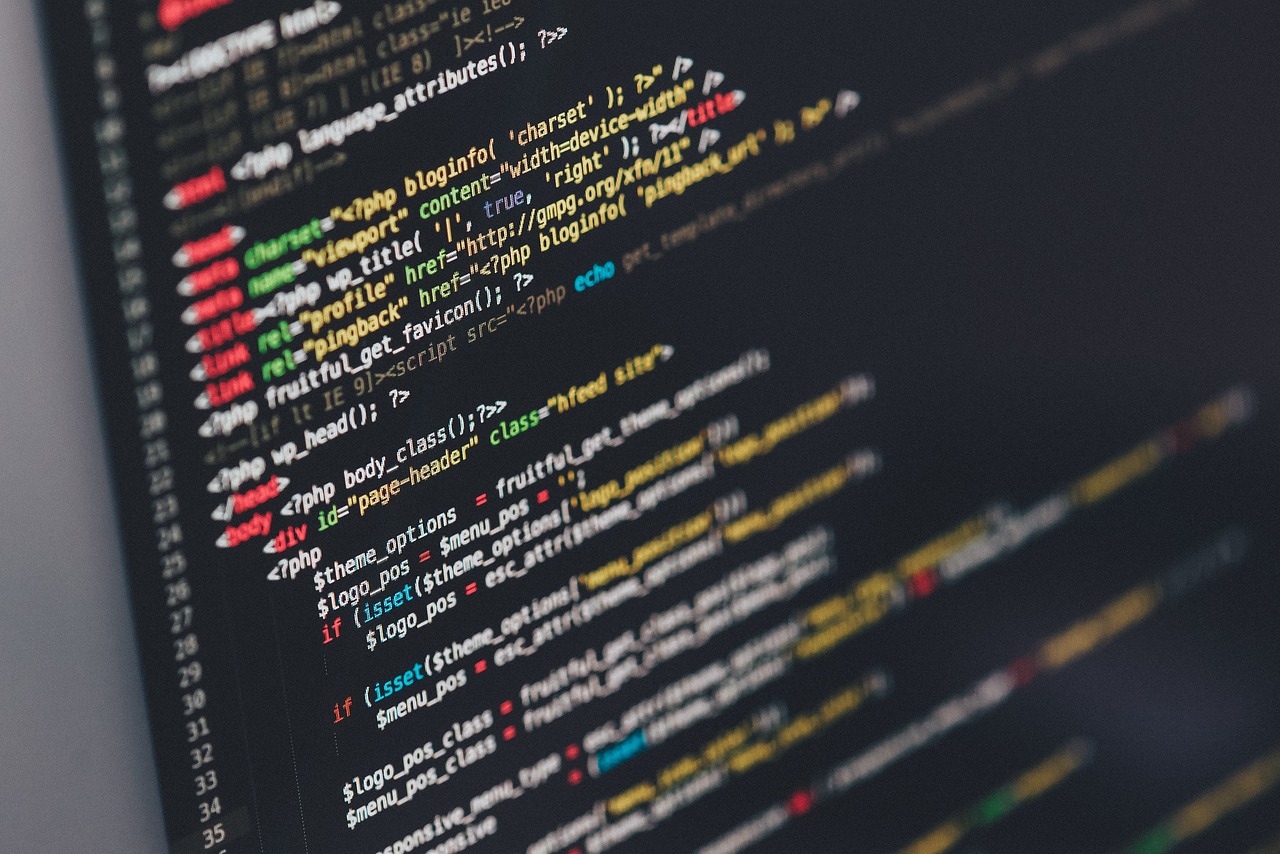
Applications in Cold Cases
Cold cases are like those forgotten treasures buried deep in the sands of time, waiting for the right tools to unearth them. With the advent of advanced DNA techniques, these cases are no longer left to gather dust on the shelves of police departments. Instead, they are being revitalized with a new lease on life, thanks to cutting-edge forensic technology. The ability to re-examine old evidence using modern methods has led to remarkable breakthroughs in investigations that had previously stalled for years, sometimes even decades.
For instance, consider the power of next-generation sequencing. This technology allows forensic scientists to analyze DNA from even the smallest samples, which is crucial when dealing with evidence that has degraded over time. By extracting DNA from items like clothing, hair, or even old biological samples, investigators can create a more complete picture of the case. This not only helps in identifying suspects but also in exonerating individuals wrongfully accused.
Moreover, the integration of digital forensics has opened new avenues for solving cold cases. Investigators can now recover deleted files, emails, and messages from electronic devices that may have been overlooked during the original investigation. This digital trail can provide critical insights and lead to new suspects or witnesses. For example, a seemingly innocuous text message might reveal a connection between a victim and a suspect that was not apparent before.
Additionally, the use of genealogy databases has revolutionized the way law enforcement approaches cold cases. By comparing DNA from crime scenes with publicly available genetic databases, investigators can identify relatives of potential suspects, creating a family tree that may lead them to the perpetrator. This method has been instrumental in solving high-profile cases that had gone cold for years, demonstrating the power of collaboration between forensic science and modern technology.
The impact of these advancements is not just theoretical; there are numerous real-world success stories. For instance, the infamous case of the Golden State Killer was cracked using genetic genealogy, leading to an arrest in a case that had puzzled law enforcement for over 40 years. Such outcomes highlight the importance of continuously evolving forensic methodologies to ensure justice is served, no matter how long it takes.
As we look to the future, the potential for solving cold cases seems boundless. The ongoing development of machine learning algorithms and artificial intelligence tools promises to further enhance our ability to analyze evidence and connect the dots in complex investigations. It's an exciting time for forensic science, and the resurgence of cold cases serves as a testament to the relentless pursuit of justice.
In conclusion, the applications of advanced forensic techniques in cold cases not only bring closure to families but also reaffirm the commitment of law enforcement to seek justice relentlessly. With each solved case, we are reminded that no mystery is too old and no evidence too small to be analyzed and understood.
- What is a cold case? A cold case is a criminal investigation that remains unsolved after a considerable amount of time has passed, often due to a lack of new evidence or leads.
- How does DNA technology help solve cold cases? Advanced DNA techniques allow forensic scientists to analyze smaller samples and provide more accurate results, which can link suspects to crime scenes.
- What role does digital forensics play in cold cases? Digital forensics involves recovering and analyzing data from electronic devices, which can provide critical evidence that may have been overlooked in the original investigation.
- Can cold cases be reopened? Yes, cold cases can be reopened if new evidence or leads come to light, often aided by advancements in forensic technology.

Ethical Considerations
As the landscape of forensic technology evolves, it brings with it a myriad of that demand our attention. With the rise of advanced DNA analysis and digital forensics, we find ourselves at a crossroads where technology intersects with personal privacy, consent, and the potential misuse of sensitive information. It's crucial to navigate these waters carefully, as the implications of our choices can be far-reaching.
One of the primary concerns revolves around privacy. As forensic scientists gain access to more sophisticated tools for analyzing genetic material, the question arises: how much of our genetic information should be available to law enforcement? The potential for databases to be misused or hacked is a pressing issue, raising alarms about who has access to this data and for what purpose. For instance, data collected for solving crimes could be repurposed for other investigations, leading to a slippery slope of ethical dilemmas.
Moreover, consent becomes a pivotal issue. Many individuals may not fully understand what they are consenting to when their DNA is collected, especially in cases involving familial searches where a relative's DNA might be used to implicate someone. This raises the question: are we adequately informing individuals about the implications of sharing their genetic information? Ensuring that consent is informed and voluntary is essential in maintaining public trust in forensic science.
Additionally, as we delve deeper into the realm of genetic analysis, the potential for misuse of genetic information cannot be overlooked. For instance, if genetic data falls into the wrong hands, it could lead to discriminatory practices or even genetic profiling that targets specific groups based on their DNA. This not only poses a threat to individual rights but also to societal equality as a whole.
To address these concerns, a multi-faceted approach is necessary. This could include:
- Establishing robust regulations that protect individuals' genetic information.
- Implementing transparent practices that ensure individuals are fully informed about how their data will be used.
- Encouraging ongoing discussions among ethicists, scientists, and law enforcement to navigate the complexities of forensic technology responsibly.
In conclusion, as we embrace the advancements in forensic technology, we must remain vigilant about the ethical considerations that accompany them. By prioritizing privacy, consent, and the responsible use of genetic data, we can harness the power of these technologies while safeguarding individual rights and maintaining public trust.
1. What are the main ethical concerns surrounding forensic technology?
The main ethical concerns include privacy issues regarding genetic information, the adequacy of consent from individuals, and the potential misuse of data for discriminatory practices.
2. How can we ensure informed consent in forensic investigations?
Informed consent can be ensured by providing clear, comprehensive information about how DNA and other data will be used, allowing individuals to make educated choices about their participation.
3. What regulations exist to protect genetic information in forensic science?
Various regulations exist, such as the Genetic Information Nondiscrimination Act (GINA) in the U.S., which prohibits discrimination based on genetic information. However, ongoing discussions and updates to these regulations are necessary as technology evolves.
4. How can law enforcement agencies balance the use of forensic technology with ethical considerations?
Law enforcement agencies can balance these needs by implementing strict guidelines for data usage, ensuring transparency in their methods, and engaging with ethicists and the public to foster trust and accountability.

Integration of Artificial Intelligence
The integration of artificial intelligence (AI) in forensic investigations is nothing short of revolutionary. Imagine a world where machines can analyze vast amounts of data at lightning speed, identifying patterns and connections that a human investigator might miss. This is not science fiction; it's happening right now, and it's changing the landscape of crime-solving. AI algorithms can sift through mountains of digital evidence, from social media interactions to financial transactions, uncovering leads that can make all the difference in a case.
One of the most exciting aspects of AI in forensics is its ability to enhance pattern recognition. Traditional methods often rely on human intuition and experience, which can be subjective and prone to error. However, AI systems can analyze data objectively, learning from previous cases and continuously improving their accuracy. For instance, AI can identify similarities in crime scenes, helping investigators link seemingly unrelated incidents. This capability is particularly valuable in cases involving serial offenders, where understanding patterns can lead to quicker apprehensions.
Moreover, AI is not just about analyzing data; it's also about predictive modeling. Imagine being able to forecast potential criminal activity based on historical data and current trends. Law enforcement agencies can use AI to predict hotspots for crime, allowing them to allocate resources more efficiently. This proactive approach could potentially deter crime before it happens, making communities safer. The use of AI in predictive policing does raise questions about bias and ethics, but when implemented thoughtfully, it can be a powerful tool in the fight against crime.
To illustrate the impact of AI in forensic science, consider the following table that outlines some key applications:
| Application | Description |
|---|---|
| Data Analysis | AI algorithms analyze large datasets to uncover hidden patterns and relationships. |
| Facial Recognition | AI systems can identify suspects from surveillance footage with high accuracy. |
| Crime Prediction | Predictive models forecast potential criminal activities based on historical data. |
| Evidence Management | AI helps in organizing and managing evidence, ensuring nothing is overlooked. |
As we look towards the future, the role of AI in forensic investigations is set to expand even further. Continuous advancements in machine learning and data processing will enhance the capabilities of forensic teams, making them more efficient and effective. However, this integration also necessitates a critical examination of ethical considerations. Questions about data privacy, consent, and the potential for algorithmic bias must be addressed to ensure that AI serves as a tool for justice rather than a source of injustice.
In conclusion, the integration of artificial intelligence into forensic investigations is reshaping how we approach crime-solving. With its ability to analyze data, recognize patterns, and predict future incidents, AI is not just an enhancement; it’s a game changer. As we continue to harness the power of technology, the future of forensic science looks brighter than ever.
- What role does AI play in forensic investigations?
AI assists in analyzing large datasets, recognizing patterns, and predicting potential criminal activities, enhancing the efficiency of investigations. - Are there ethical concerns with using AI in forensics?
Yes, ethical considerations include data privacy, consent, and the potential for bias in AI algorithms, which need to be addressed to ensure fair use. - How does AI improve crime scene analysis?
AI can automate data analysis and provide insights that help investigators link evidence to suspects, improving the accuracy of crime scene reconstructions. - Can AI help solve cold cases?
Absolutely! AI can analyze old evidence in new ways, potentially leading to breakthroughs in cases that have remained unsolved for years.
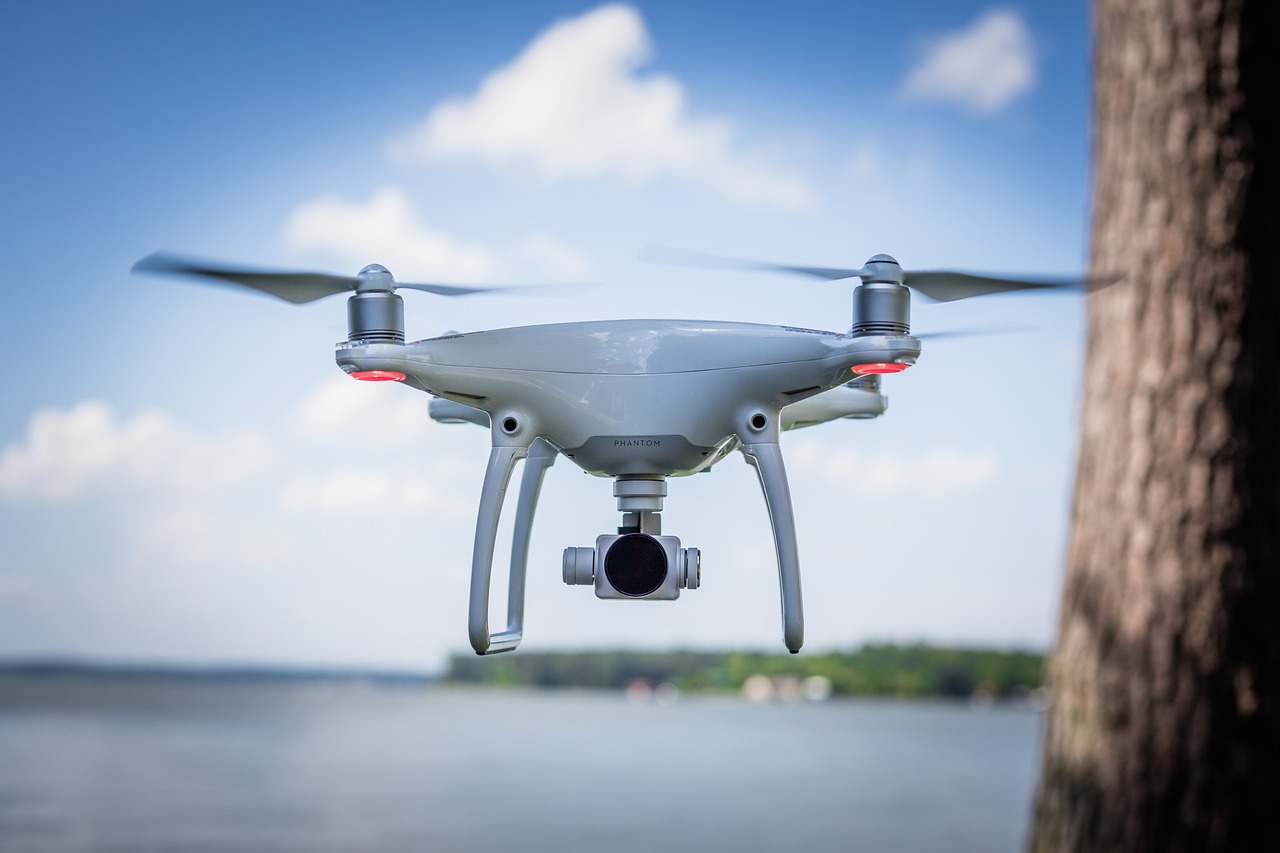
Improved Crime Scene Reconstruction
The landscape of forensic investigations is evolving rapidly, and one of the most exciting developments is in crime scene reconstruction. Gone are the days when investigators relied solely on sketches and written descriptions to piece together the events of a crime. Now, with the advent of advanced technological tools, we can create stunningly accurate and detailed visual representations of crime scenes. This not only aids investigators in their work but also enhances the presentation of evidence in court, making it more accessible and understandable for juries.
One of the most significant advancements in this area is the use of 3D scanning technology. This method allows forensic experts to capture every detail of a crime scene with remarkable precision. By using lasers to scan the environment, they can create a three-dimensional model that reflects the exact layout, dimensions, and even the positioning of evidence. Imagine being able to walk through a virtual replica of the crime scene, examining everything from various angles. This immersive experience can provide critical insights that traditional methods might overlook.
Moreover, virtual reality (VR) is taking reconstruction to the next level. Investigators can don VR headsets and step into a simulated environment that replicates the crime scene. This technology not only helps in understanding the sequence of events but also allows for the testing of different scenarios. For instance, how would the outcome change if a suspect had taken a different route? With VR, these questions can be explored in a controlled setting, leading to deeper insights and potentially new leads in investigations.
In addition to 3D scanning and VR, the integration of drones has revolutionized crime scene analysis. Drones equipped with high-resolution cameras can capture aerial images of crime scenes, providing a unique perspective that ground-level photographs simply cannot achieve. This bird's-eye view is particularly useful in complex environments, such as urban settings or large outdoor areas, where traditional methods might miss crucial details. The data collected by drones can be combined with other technological tools to create a comprehensive overview of the scene.
To illustrate the impact of these technologies, consider the following table that summarizes the key advantages of modern crime scene reconstruction methods:
| Technology | Advantages |
|---|---|
| 3D Scanning |
|
| Virtual Reality |
|
| Drones |
|
As we look to the future, it's clear that the integration of these technologies will continue to enhance the capabilities of forensic investigators. The ability to reconstruct crime scenes with such accuracy not only aids in solving cases but also serves to uphold justice by presenting clear and compelling evidence. In a world where every detail matters, these advancements ensure that no stone is left unturned.
Q: How does 3D scanning work in crime scene reconstruction?
A: 3D scanning uses laser technology to capture the precise dimensions and details of a crime scene, creating a digital model that can be analyzed from different angles.
Q: Can virtual reality be used in court?
A: Yes, virtual reality can be used to present crime scene reconstructions in court, helping juries understand the evidence in a more immersive way.
Q: What role do drones play in forensic investigations?
A: Drones provide aerial imagery of crime scenes, offering a unique perspective that can assist in evidence collection and scene analysis, especially in complex environments.

Use of Drones
This article explores the transformative impact of technology on forensic investigations, highlighting advancements in tools, techniques, and methodologies that enhance the accuracy and efficiency of crime scene analysis and evidence processing.
Digital forensics has become a critical component of modern investigations, focusing on recovering and analyzing data from electronic devices to uncover evidence that can lead to solving crimes and prosecuting offenders.
Technological innovations in DNA analysis have significantly improved the speed and accuracy of genetic testing, allowing forensic scientists to obtain results from smaller samples and aiding in the identification of suspects and victims.
Next-generation sequencing technology enables rapid and comprehensive analysis of genetic material, providing deeper insights into DNA profiles and enhancing the ability to link suspects to crime scenes through genetic evidence.
The application of advanced DNA techniques has revitalized cold cases, allowing law enforcement to re-examine old evidence with modern methods, leading to breakthroughs in investigations that had previously stalled.
As DNA analysis technology evolves, ethical concerns regarding privacy, consent, and the potential for misuse of genetic information have emerged, necessitating discussions about regulations and best practices in forensic science.
Artificial intelligence is revolutionizing forensic investigations by automating data analysis, improving pattern recognition, and assisting in predictive modeling, thereby enhancing the efficiency and effectiveness of crime-solving efforts.
Technological tools such as 3D scanning and virtual reality are redefining crime scene reconstruction, allowing investigators to create detailed visual representations that aid in understanding events and presenting evidence in court.
Drones are increasingly used in forensic investigations to capture aerial imagery of crime scenes, providing a unique perspective that can assist in evidence collection and scene analysis, especially in complex environments. Imagine a bird's-eye view of a crime scene, where every detail can be meticulously documented without the physical constraints of traditional methods. The use of drones not only enhances the visual documentation of a scene but also allows investigators to:
- Access hard-to-reach areas safely.
- Collect high-resolution images and videos for detailed analysis.
- Map out crime scenes in real-time, providing a comprehensive overview.
Moreover, drones equipped with thermal imaging technology can detect body heat, which is particularly useful in search and rescue operations or when locating hidden evidence. By integrating this advanced technology into their toolkit, forensic teams can work more efficiently and effectively, reducing the time it takes to gather crucial evidence. It's like having a super-powered assistant that can zoom in on details you might otherwise miss!
As technology continues to advance, the future of forensic investigations holds promise for even greater innovations, including enhanced analytical tools, automated processes, and improved collaboration among law enforcement agencies to solve crimes more efficiently.
Q: How are drones specifically used in forensic investigations?
A: Drones are utilized to capture aerial footage, create detailed maps of crime scenes, and access hard-to-reach areas safely, enhancing evidence collection.
Q: What advantages do drones offer over traditional methods?
A: Drones provide a unique aerial perspective, allow for quicker documentation, and can access difficult terrain without putting investigators at risk.
Q: Are there any legal issues surrounding the use of drones in forensic investigations?
A: Yes, the use of drones must comply with privacy laws and regulations, and investigators must ensure they have the necessary permissions to fly in certain areas.

Virtual Reality Training for Investigators
Imagine stepping into a world where crime scene investigations are not just theoretical exercises but immersive experiences that prepare investigators for real-life scenarios. Virtual reality (VR) training is doing just that—transforming how forensic investigators hone their skills and approach crime scene management. This innovative technology allows them to practice in a controlled yet realistic environment, simulating various crime scenes and scenarios that they may encounter in the field.
One of the most significant advantages of VR training is its ability to provide a hands-on learning experience without the risks associated with actual crime scenes. Investigators can explore different environments, interact with virtual evidence, and even engage in role-playing exercises to improve their communication and decision-making skills. For instance, they might find themselves in a simulated burglary scene, where they must collect evidence while considering the potential presence of suspects. This kind of training not only builds confidence but also enhances their ability to think critically under pressure.
Furthermore, VR training can be tailored to address specific challenges investigators face. For example, if a team struggles with collecting evidence in a chaotic scene, a customized VR scenario can be developed to replicate that chaos. This targeted approach ensures that investigators are well-prepared for the unexpected. In addition, the use of VR can facilitate collaboration among team members, as they can engage in joint training sessions, discussing strategies and tactics in real-time as they navigate through the virtual environment.
To illustrate the impact of VR training on forensic investigations, consider the following table that outlines key benefits:
| Benefit | Description |
|---|---|
| Realism | Simulates real-world scenarios for effective learning. |
| Safety | Allows practice without the risks of actual crime scenes. |
| Customizability | Training scenarios can be tailored to specific challenges. |
| Team Collaboration | Facilitates joint training sessions among investigators. |
As the technology continues to evolve, the opportunities for VR training in forensic investigations will expand even further. With advancements in graphics and interactivity, the training experiences will become increasingly lifelike, providing investigators with the tools they need to excel in their roles. In a field where precision and attention to detail are paramount, VR training is proving to be a game-changer, equipping law enforcement professionals with the skills and confidence to tackle even the most complex cases.
- What is virtual reality training? Virtual reality training uses immersive technology to simulate real-world scenarios, allowing users to practice skills in a safe and controlled environment.
- How does VR training benefit forensic investigators? It helps improve critical thinking, decision-making, and evidence collection skills by providing realistic scenarios without the risks associated with actual crime scenes.
- Is VR training customizable? Yes, VR training can be tailored to address specific challenges and scenarios that investigators may encounter in their work.
- Can VR training facilitate teamwork? Absolutely! VR training allows teams to engage in joint exercises, enhancing communication and collaboration among investigators.

The Future of Forensic Technology
As we gaze into the crystal ball of forensic science, the future shines brightly with the promise of groundbreaking advancements. The integration of cutting-edge technology is not merely a trend; it’s a revolution that is set to redefine how forensic investigations are conducted. Imagine a world where crime scene analysis is not only faster but also more accurate, thanks to sophisticated tools that can process vast amounts of data in the blink of an eye.
One of the most exciting developments on the horizon is the use of automated analytical tools. These tools will leverage machine learning algorithms to sift through evidence with unparalleled speed and precision. For instance, instead of spending hours manually analyzing data, forensic scientists will be able to input their findings into a system that can identify patterns and anomalies in seconds. This shift will not only save time but also reduce human error, which is crucial in high-stakes investigations.
Moreover, the collaboration between law enforcement agencies is expected to improve significantly. With the advent of cloud-based platforms, sharing information across jurisdictions will become seamless. Imagine a scenario where a piece of evidence in one state can be instantly matched with a case in another, thanks to a centralized database that utilizes artificial intelligence to connect the dots. This level of collaboration could lead to faster resolutions of cases and a more efficient justice system.
In addition, we can anticipate the rise of wearable technology for forensic investigators. Picture detectives equipped with smart glasses that can overlay digital information onto their field of vision. This augmented reality could provide real-time data about a crime scene, including previous investigations, witness statements, and even potential leads, all while allowing the investigator to remain focused on the task at hand.
As exciting as these advancements are, they also bring forth ethical considerations that must be addressed. The potential for misuse of technology, especially concerning privacy and consent, cannot be ignored. As forensic methodologies evolve, there will be an increasing need for regulations that safeguard individuals' rights while still allowing law enforcement to effectively do their job. Discussions around best practices will become essential to ensure that the benefits of technological advancements do not come at the cost of civil liberties.
In conclusion, the future of forensic technology is not just about new gadgets and software; it’s about creating a more efficient, accurate, and ethical system for solving crimes. As we embrace these advancements, we must also remain vigilant about the ethical implications they bring. The path ahead is filled with potential, and it’s up to us to navigate it wisely.
- What are some upcoming technologies in forensic science?
Some of the promising technologies include automated analytical tools, augmented reality for investigators, and enhanced DNA analysis techniques. - How will AI impact forensic investigations?
AI will automate data analysis, improve pattern recognition, and assist in predictive modeling, making investigations more efficient and effective. - What ethical concerns arise with new forensic technologies?
Concerns include privacy issues, consent for data use, and the potential for misuse of genetic information. - How can law enforcement agencies collaborate more effectively?
Through cloud-based platforms that allow for seamless sharing of evidence and information across jurisdictions.
Frequently Asked Questions
- What is digital forensics and why is it important?
Digital forensics involves recovering and analyzing data from electronic devices to uncover crucial evidence in criminal investigations. Its importance lies in the fact that an increasing number of crimes involve digital elements, making it essential for law enforcement to understand and analyze this data effectively.
- How has DNA analysis technology improved in recent years?
Recent advancements in DNA analysis technology have significantly increased the speed and accuracy of genetic testing. Forensic scientists can now obtain reliable results from smaller samples, which is a game changer in identifying suspects and victims more efficiently.
- What is next-generation sequencing and how does it help in forensic investigations?
Next-generation sequencing (NGS) is an advanced method that allows for rapid and comprehensive analysis of genetic material. This technology provides deeper insights into DNA profiles, enhancing the ability to link suspects to crime scenes through precise genetic evidence.
- Can advanced DNA techniques help solve cold cases?
Absolutely! Advanced DNA techniques have revitalized many cold cases by allowing law enforcement to re-examine old evidence with modern methods. This has led to breakthroughs in investigations that had previously stalled, providing hope for families seeking closure.
- What ethical concerns arise with advancements in DNA analysis?
As DNA analysis technology evolves, ethical concerns regarding privacy, consent, and potential misuse of genetic information have emerged. These issues highlight the need for regulations and best practices to ensure responsible use of genetic data in forensic science.
- How is artificial intelligence changing forensic investigations?
Artificial intelligence (AI) is revolutionizing forensic investigations by automating data analysis, improving pattern recognition, and assisting in predictive modeling. This enhances the efficiency and effectiveness of crime-solving efforts, allowing investigators to focus on critical aspects of their cases.
- What role do 3D scanning and virtual reality play in crime scene reconstruction?
3D scanning and virtual reality are redefining crime scene reconstruction by enabling investigators to create detailed visual representations of scenes. These tools help in understanding events more clearly and presenting evidence compellingly in court.
- How are drones utilized in forensic investigations?
Drones are increasingly being used to capture aerial imagery of crime scenes, providing a unique perspective that can assist in evidence collection and scene analysis. This is particularly valuable in complex environments where traditional methods may be limited.
- What benefits does virtual reality training offer to forensic investigators?
Virtual reality training simulates real-world scenarios for forensic investigators, enhancing their skills in evidence collection and crime scene management. This immersive training leads to more effective investigations, as investigators become better prepared for actual situations.
- What does the future hold for forensic technology?
The future of forensic technology is promising, with expectations for enhanced analytical tools, automated processes, and improved collaboration among law enforcement agencies. These innovations will help solve crimes more efficiently and effectively, ultimately benefiting society as a whole.




